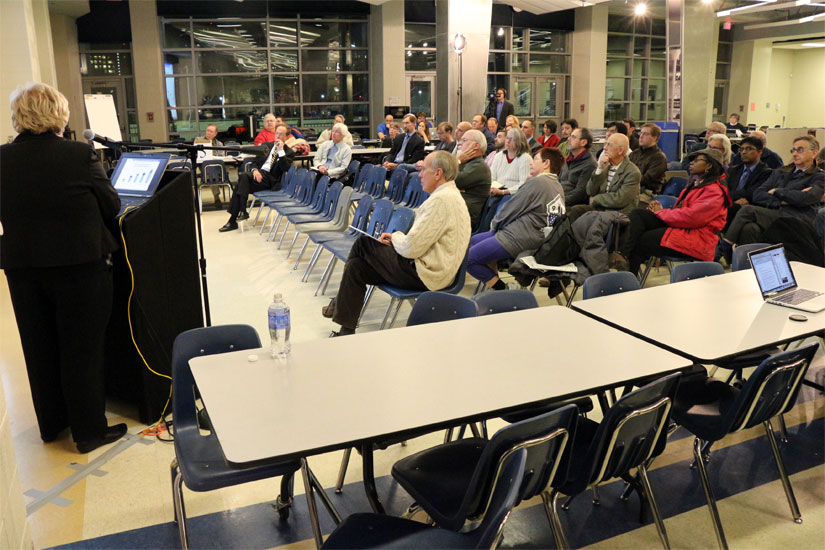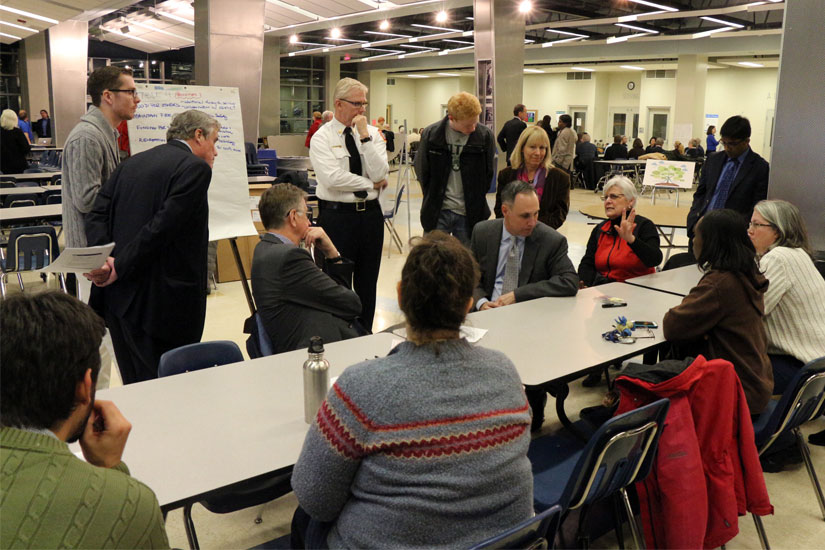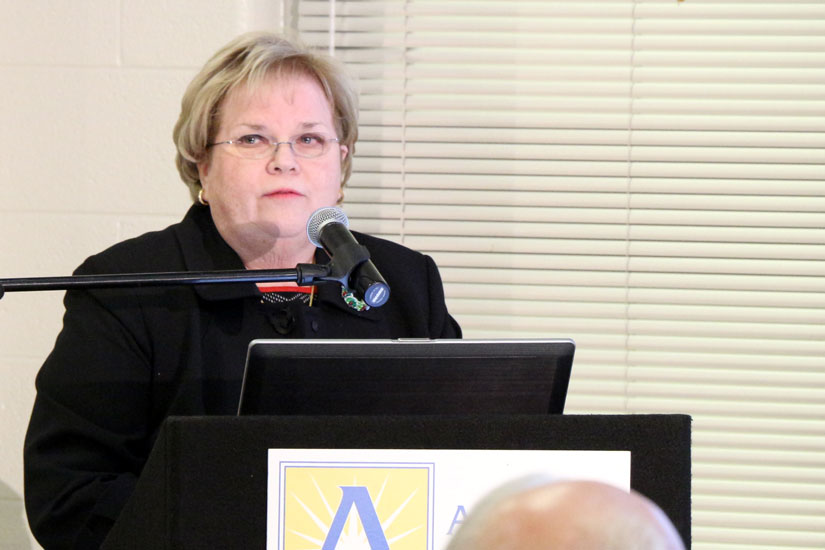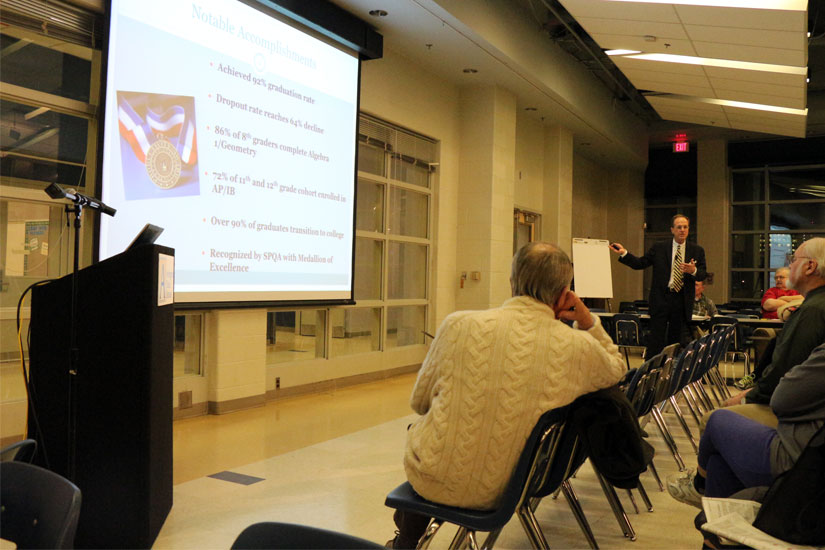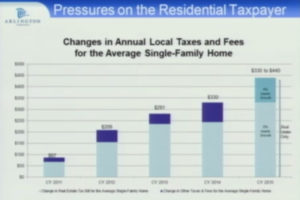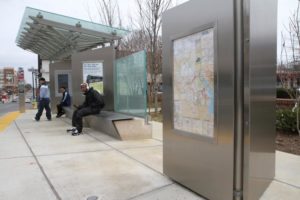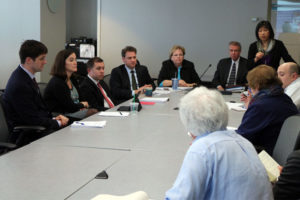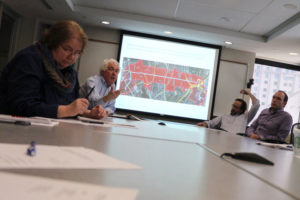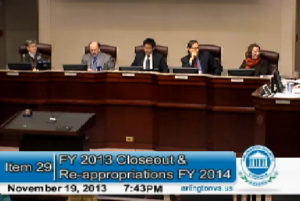County Manager Barbara Donnellan and Arlington Public Schools Superintendent Patrick Murphy, in a meeting with a few dozen residents last night, explained plans to handle the Arlington’s projected $28.4 million shortfall for next year.
“It will take cuts,” Donnellan said from a podium in Washington-Lee High School’s cafeteria. “It’s not an option. The Board may increase [spending] in some areas, but we’re going to have to cut.”
After presentations where each laid out the state of their administrations — Donnellan summarized the stagnant corporate real estate assessments, while Murphy laid out the school system’s exploding enrollment — residents broke into groups with staff members to discuss possibilities for budget improvements.
“I think there should be more sharing between the county and schools,” one resident said, telling a story about tree surveying around Thomas Jefferson Middle School. He said the county conducted a tree survey, and months later APS conducted one of its own. “There is too much duplicity and excess.”
Other resident questions and ideas posed in breakout groups, as taken down by county and APS staff, were:
- Why not use budget reserves instead of cutting services?
- Is APS looking into cutting from summer school or increasing class size?
- Will the county close Artisphere?
- Can the coordination between county permitting and APS improve for projecting student generation?
A topic that came up at multiple groups was Foreign Language in Elementary Schools, an initiative that has drawn community support and is offered in a majority of the county’s elementary schools. Multiple attendees suggested the program could be scaled back, while others, who supported its implementation, questioned the common sense of offering FLES while not allowing sixth-graders to take a language.
Donnellan and Murphy said they were gathering information before creating their proposed budgets, which will be presented to their respective boards in February.
“The residents give a lot of good insight into the tolerance for what they’re willing to live with and without,” Donnellan told ARLnow.com. “You get a lot of balance and they have a really good conversation.”
Murphy was less focused on cuts than the school system’s performance thus far and its growing needs. APS is projecting $8.7 million in this year’s budget for teacher pay step increases, and Murphy said the idea of a hiring freeze or cutting teacher pay is not a solution.
“D.C. is now offering $50,000 for an entry-level teacher,” he said. “They are stepping into the fray to make the market more competitive. We need to maintain that competitiveness.”
While many have called for more coordination between the governments, Donnellan and Murphy stressed that the two organizations work in tandem, not in opposition.
“It’s not schools vs. county,” Donnellan said after her presentation. “It’s one budget, it’s one community.”



